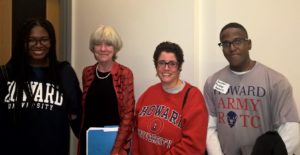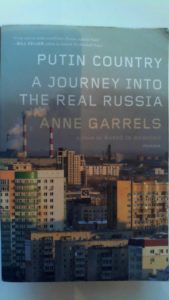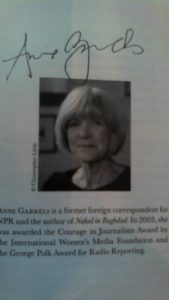Those of us who entered the Slavic studies field in the Soviet era “grew up” with an understanding of two things: it would be hard, and we would have to question every little bit of information presented to us. The 1990s, with its period of “transition” and political change, raised a new generation that came to take for granted easy access to the Soviet Union – multi-entry visas? Really? – and a moderately diversifying atmosphere, with the growth of “normal” businesses and numerous missionaries in our first year Russian classrooms.
As we started to feel like our innate skepticism and cultural skills that emphasized the realistically paranoid – as in, yes, they were really watching you paranoid – were an instrument for the history books, Vladimir Putin took over. The skills of the dinosaurs in our field became necessary for proper study of Russia once again.
One of the respected reporters from the Soviet period has published a memoir/study of Russia, Putin Country: A Journey Into the Real Russia (New York: Picador 2016).The skills developed over decades of working with television and radio news –she was the voice that narrated Gorbachev’s coup for me when I was in Greenville, South Carolina, for instance – have combined with mastery of essential history and an in-depth understanding of Putin’s government and resulted in an amazingly accessible story of why Putin enjoys the support he has in Russia. This is a great, gripping narrative, that goes down as nicely as National Public Radio with your morning coffee, except that it goes on for 227 pages. This is one report that is not going to get cut short for the local traffic report.

Then she was charming to my Howard University students. Made the ten hour drive to Ohio State University and the Midwest Slavic Conference totally worth it. #BISONSLAVISTS #BIGGERFANGIRL!
Ms. Garrels follows the narrative strategy of using an individual example to humanize data that would easily overwhelm even the most ardent data fiend if presented as a spreadsheet. Each chapter represents one subsection of the Russian population: “A Gay Life,” “The Believers,” “Freedom of Speech,” and “Nuclear Nightmare,” among others. For each group, Ms. Garrels tells of her relationship with a member of each subpopulation, and how their lives have changed since the fall of the Soviet Union. Again and again Ms. Garrels point ways in which the 1990s proved a difficult, traumatizing period for Russian society at large.
The true charm – and value –of this narrative is the way in which she shows the drastic difference between the capital cities – Moscow and Saint Petersburg – and the provinces, and how critical the difference between these two types of cities was to the rise of Putin. Her story of how she settled on Chaliabinsk, a formerly closed city close to a still closed nuclear city, is engaging in and of itself. The years of research on site and outside allows her to weave what would be otherwise overwhelming amounts of historical data as a natural part of the experience of each of her subjects. She makes the rise of Putinism, with the increasing limitations it places on civil liberties across the board understandable, and at times almost logical. Most importantly, she clarifies the extent to which the cultural and economic trauma of the 1990s still haunts Russian politics.
This is the perfect book for the Russia head who wants to show that skeptical aunt why Russia is still a subject worthy of serious interest. Or the Puerto Rican family that at times wonders why one would vote for study abroad in Leningrad instead of Barcelona.


